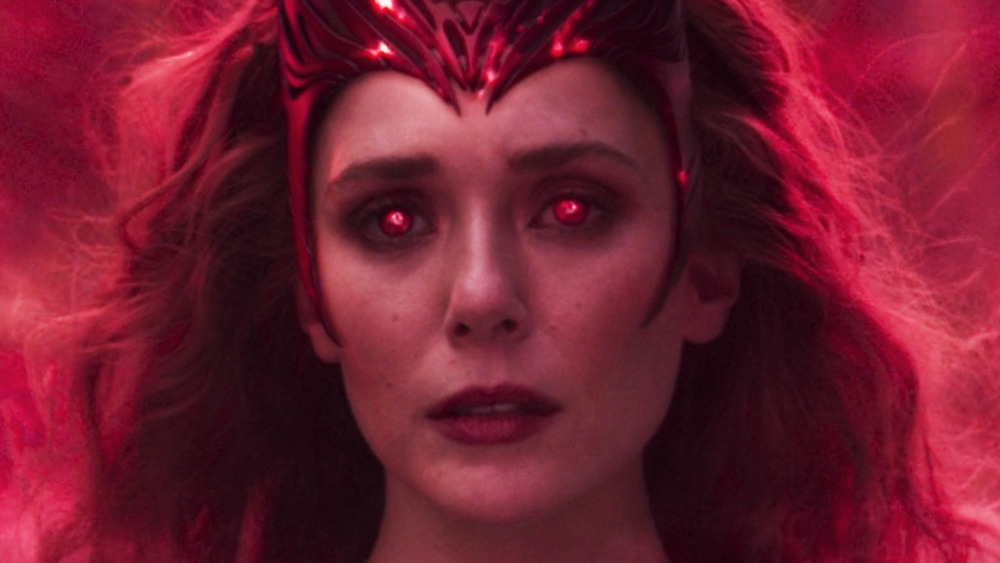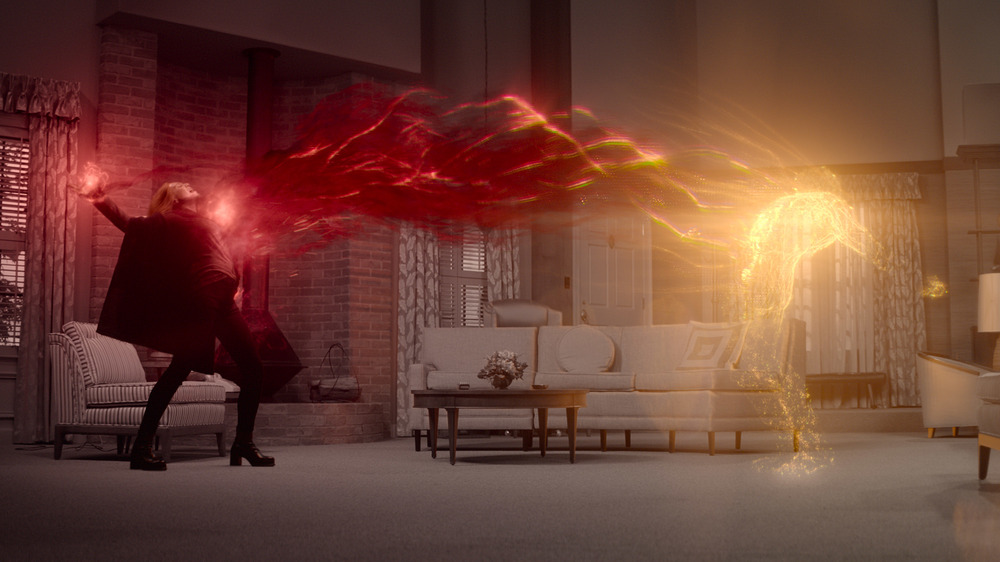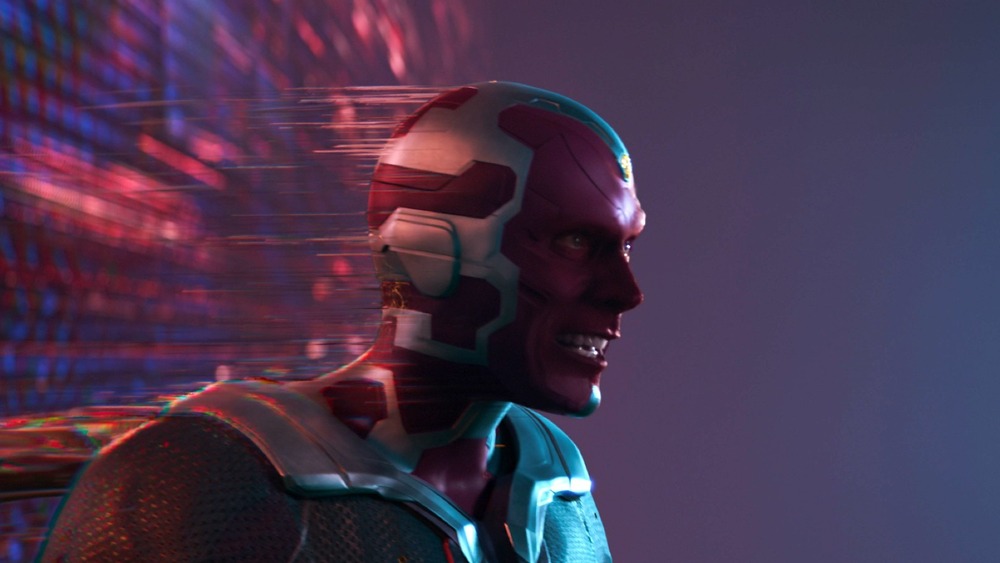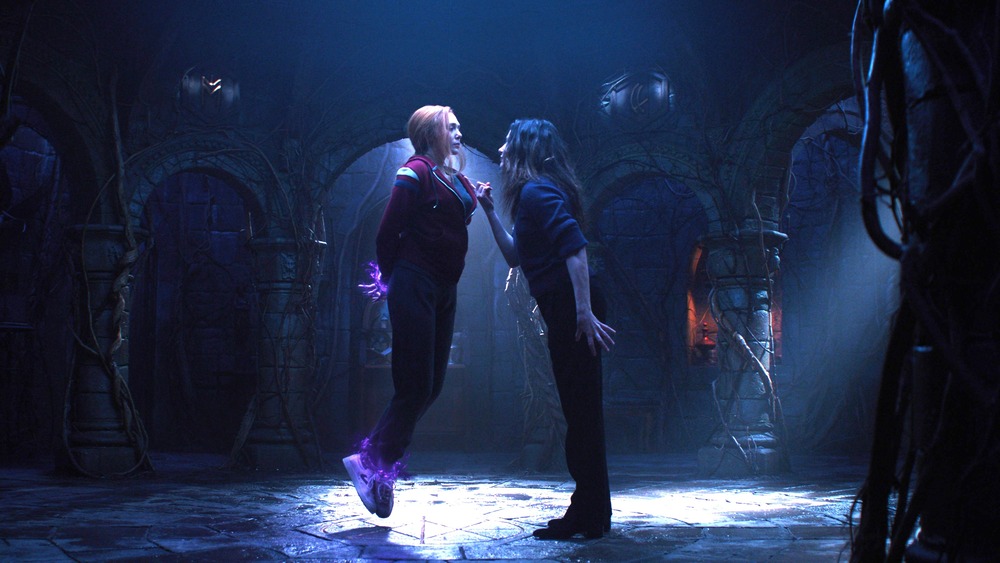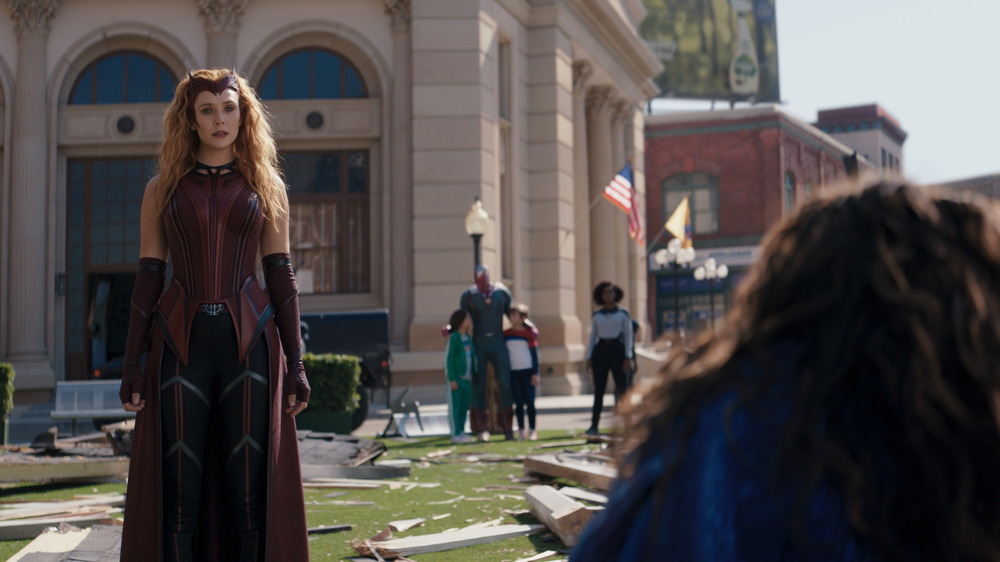WandaVision Visual Effects Supervisor Tara DeMarco Takes Us Behind The Magic Of The Show - Exclusive Interview
It has taken talented individuals from all creative corners to create WandaVision, not the least of which all the digital artists who forged the smash Disney+ limited series' elaborate visuals. Headed by visual effects supervisor Tara DeMarco, the effects in the series — which ramped up considerably after the classic sitcom homages in the first three episodes — demonstrated that Marvel Studios was intent on delivering the same sort of inspired visuals as its Marvel Cinematic Universe predecessors.
DeMarco is relatively new to the world of event television or films, having previously worked on such indie films as the 2015 sports comedy The Bronze and the 2017 biographical drama The Pirates of Somalia. WandaVision marked DeMarco's first official work with Disney, with her only previous opportunity coming in 2007 as an uncredited compositor on the Pirates of the Caribbean: At World's End video game.
WandaVision was a unique project for all creatives involved on either side of the camera, as the elaborate storyline about Wanda Maximoff, a.k.a. Scarlet Witch (Elizabeth Olsen), processes her grief over the loss of her love Vision (Paul Bettany) through the use of chaos magic. The mystical force gives Wanda the ability to build the ideal world that she and Vision didn't get to have after he perished in Avengers: Infinity War, but that façade does have its share of cracks — and the more those cracks are exposed, the greater the demands on DeMarco and her fellow visual artists to create effects akin to the kaleidoscopic environments in previous MCU installments.
In an exclusive interview with Looper, DeMarco talked about her sources of inspiration on WandaVision, her favorite MCU character, and her work on a pivotal scene between the Scarlet Witch and Agatha Harkness (Kathryn Hahn). All nine episodes of WandaVision are streaming now on Disney+.
Tara DeMarco says fan art served as an inspiration for the WandaVision FX artists
How closely do you pay attention to the reactions of people online, et cetera, during the course of a series like this?
It's interesting. I have been working on the series during at least most of the series. I don't have a ton of time to pay attention to reactions. I do get to see some, but what I've found really impactful is actually fan art, because it ends up creeping around and different people on our little visual effects team will share it. And it's incredible to me, that within a day, if a scene was impactful, then there's art that people spend their own time recreating and immortalizing in other ways — I love it.
That must fuel you in a way, inspire you, which is a great thing, as opposed to the opposite.
Oh no, it's incredible. It is inspiring. It is uplifting. It is amazing.
One of the most exciting things for the fans of WandaVision, or any MCU project for that matter, is the way that these Easter eggs turn up in the series. Now, some of those Easter eggs are through practical effects. They might just be simple props on set, but others I'm sure materialized through the visual effects. I'm wondering — in your estimation, what was the most elaborate visual effects Easter egg that you helped put together?
I have an exceptionally disappointing answer: We did not add any our visual effects Easter eggs! I don't know what to say, but we didn't. We would execute the scenes as desired by [director] Matt Shakman and by the studio. And we would take inspiration for what served the story, but I swear, we didn't add any. We all didn't want to get in trouble.
Since Scarlet Witch's path is heading from WandaVision to Doctor Strange in the Multiverse of Madness, were there any special effects scenes planned that included Benedict Cumberbatch? Because obviously, you're in on this thing from the very beginning, you know that there's so much out there to do, and some of it you might not get to. I'm just wondering if anything of the sort was a possibility?
Not to my knowledge. We execute the scenes we're given, so if there are other possibilities, we wouldn't know about them.
WandaVision was a huge collaboration behind the camera, Tara DeMarco says
You must be intricately involved with the creative talents behind the camera, including Matt Shakman, series creator and head writer Jac Schaeffer, and Marvel President Kevin Feige. Are those folks instrumental in what you do in order to execute the visual effects in those scenes?
Absolutely. Once we have a script, then we really dig in and figure out what we would need to do to execute whatever vision, no pun intended, that script might call for. And at the point in which we're given the script pages, then we really begin our planning.
Going back to the question about how the fans are reacting. Can you say whether there were any sequences planned with Mephisto, for example, with all the fan theories that were spreading out there?
I have genuinely no idea.
Well, that's an honest answer! That's what we want. I'm trying not to bug you too much about this kind of stuff —
No, I know. There are things that we deliberately tip hat to the comic book that they're not so much Easter eggs as a visual homage. We purposefully included House of M pieces when Vision comes apart and the kids come apart, and we had the comic [on set]. I mean, I would hold it up to the camera and talk to the artists. We would definitely reference specific comic imagery regularly. And that isn't so much hidden as intentional.
Does that add some sort of pressure? Because with fans of the MCU, obviously a lot of them are fans of the Marvel comics, so there's a lot of preconceived notions and expectations coming into a project like WandaVision. Do those expectations faze you at all when you're executing them, because you don't want to disappoint the fans?
I don't think it adds any extra pressure. It's more like it adds inspiration, to make sure that we are doing our very best with as many iterations as we can get, or creative changes, just to make sure that we're executing imagery that the fans will appreciate. It's more like something to strive for than something to be afraid of.
Traveling down the Witches' Road
You're given direction and you're giving specific Marvel comics to look at to help bring the visual effects to life. In particular, were there any titles that inspired you?
Oh, I mean, we all on the show read [Scarlet Witch Vol. 1:] The Witches' Road, just because Agatha Harkness is in it, and there is a bit of the relationship of Agatha and Wanda in the show. I actually didn't really know how much of that translated into the script, but I did take inspiration from a few of the elements of Witches' Road.
Having done a project like WandaVision and seeing the outpouring of support for it has to fuel the desire to do more in the MCU. Is there a particular MCU storyline or a character, if you had a wish list, that you're desperate to become a part of in the future?
I don't actually know. I mean, I'm such a fan of Marvel as well as being a part of it, that I like seeing what other people create as well. There's really a relationship with your director and your writer and the studio, that is a special little combination of people that we found for WandaVision that was wonderful. I would want another project to have that special cocktail, even if it wasn't necessarily the characters for which I'm the biggest fan.
Who are your personal favorites?
The character of Rocket [from Guardians of the Galaxy] is incredible. As a visual effects person and as a fan, I love Rocket, but I know that Rocket has been executed so well. I would want the same people to continue to do that and make him amazing.
Tara DeMarco studied the work of her MCU predecessors
Since you're a fan, I'm presuming you studied the visual effects of your MCU predecessors? Was there a particular shot or shots of an MCU film that just absolutely wowed you and made you think, "You know what? I think this is going to make me want to up my game."
I mean, we took inspiration from [Avengers: Age of] Ultron and from several of the other films with Wanda and Vision for our show, and that set the bar quite high for the kind of visual effects we wanted to achieve for WandaVision, to keep it in that same ballpark. Then we began filming in the summer or fall of 2019, after we had seen Endgame, which was so big and so inspirational. So it all just set a scene and set a bar, not that we have massive talking Hulks, but it was inspirational to see what could be achieved by the same group of people and try to tell our story and elevate it to the place that was right.
Would you consider one of those high bars that spectacular confrontation between the Scarlet Witch and Agatha Harkness? What a great scene. Was that a certain high mark for you while working on the series?
Absolutely. It was incredible to see Agatha and Wanda and their duel and the Rune reveal at the end. And we had all, even on the show, been waiting for [Wanda's Scarlet Witch] costume reveal for quite a while, because we had to film the scene with her Mind Stone reveal, like the little scenes that her form in the Mind Stone and then the reflection in her eye. We had waited to shoot the beats until we had the costume with the crown, and we had Wanda up on wires with the wind and everything. So it was huge to get to do that.
